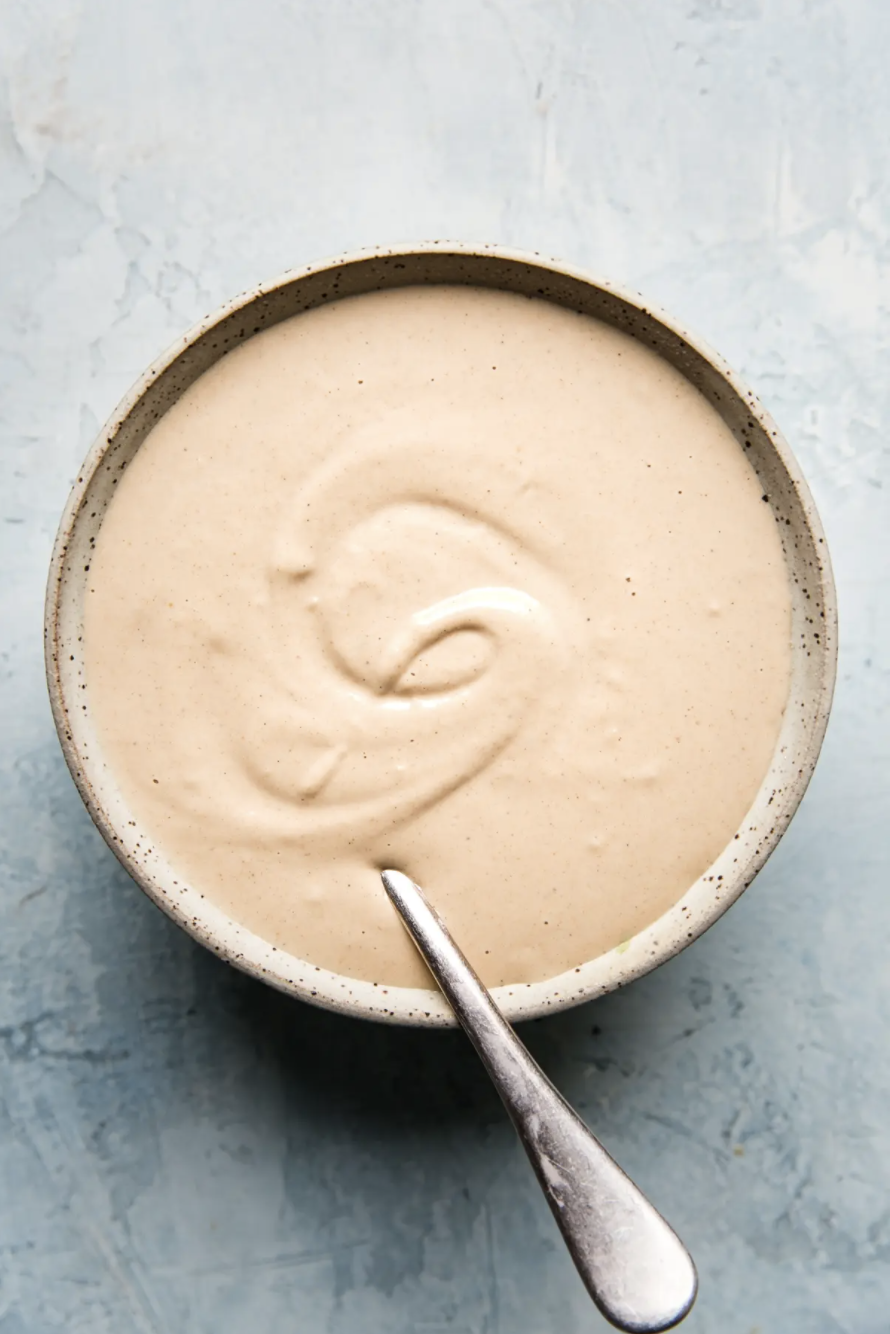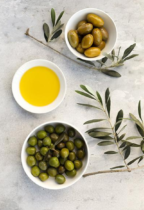This story is a part of the Sprig & Vine Pantry, a glossary breaking down some of our favourite ingredients: what they are, where you can find them, and how to use them.

So your purchases for tahini are probably fueled by your obsession with hummus (which it’s ubiquitous to), but it’s good for so much more. In simplest terms, tahini is a smooth, thick, creamy paste made from toasted and ground sesame seeds. It’s basically what almond butter is to almonds, peanut butter is to peanuts… tahini is to sesame seeds.
Where it comes from:
The etymology of the word ‘tahini’ is the Hebrew and Arabic word ‘tchina,’ which means ‘to grind,’ a reference to the process by which the sesame seeds are ground into a paste. It’s essential to Middle Eastern and Mediterranean cooking, but has found its way into modern cuisines across the world.
Why we love it:
Tahini has a unique nutty flavour, which isn’t sweet like most nut butters. It’s rich, creamy and luxurious – and when it’s the good kind, you’ll want to lick it off a spoon. The texture is similar to a runny nut butter, but with toasty and really savoury notes. It’s also got a slight bitterness to it that other nut butters don’t, but that only complements its savoury quality. It’s also an extremely versatile ingredient to have on hand, specially for those on a vegan diet as it lends a rich and fatty quality to almost any dish.
How to store it:
Tahini should always be stored in a cool, dark place and away from heat and sunlight – similar to where you store other nut butters. Both inside a pantry cabinet and in the fridge are ok – just depends on your preference.
What to look for:
Tahini is of two varieties, depending on whether it’s made from hulled or unhulled sesame seeds. Tahini made from hulled sesame seeds is paler and creamier as compared to the one made from unhulled sesame seeds, so it’s the one you should look out for.
Another way to know whether you’ve got the good stuff: Good tahini should be nutty and savoury, with a creamy mouthfeel. Slight bitterness is okay, but it shouldn’t be overpowering and astringent. Bad tahini is either extremely bitter, or has a dry and chalky mouthfeel.
Though tahini is usually made from white sesame seeds, you might also come across black tahini, made from black sesame seeds, which has a more intense toasty flavor.
When purchasing tahini, look at the ingredient list. Most high-quality brands contain just the one ingredient: sesame seeds (perhaps along with some agents that make it shelf-stable). Tahini is readily available in major grocery stores, natural food stores and online retailers like Amazon (check out our favourite brand here). You can also make your own tahini since it’s so easy to make: similar to making nut butters, simply blend toasted sesame seeds until it forms the consistency you’re looking for. Store in a mason jar or an airtight container and kept in fridge to prevent spoiling.
How to use it:
First things first, stir your tahini well before using as the oil separates during storage.
As for what to make with it, the options are endless! Remember how we told you tahini is similar to other nut butters but with savoury notes? Well, you can use it in pretty much the same way.
Use tahini as a spread on toast, or a dip for pita bread and vegetable sticks like carrot, celery and cucumber.
Use it in salad dressings for some bulk and creaminess, or to coat noodles with.
Add some to smoothies or your morning coffee for additional protein and creaminess. You can smear it on toast with some honey and bananas for a power-packed breakfast.
Use it to make nice-cream where it lends a rich silkiness, or on top of your oats paired with a maple syrup for a delicious combo.
Tahini can also be swirled into baked goods like brownies, cookies, or loaf cake to add a unique nuttiness and tone down the sweetness.
And then, of course, there’s always hummus!
Cover Image Source: Modern Proper


